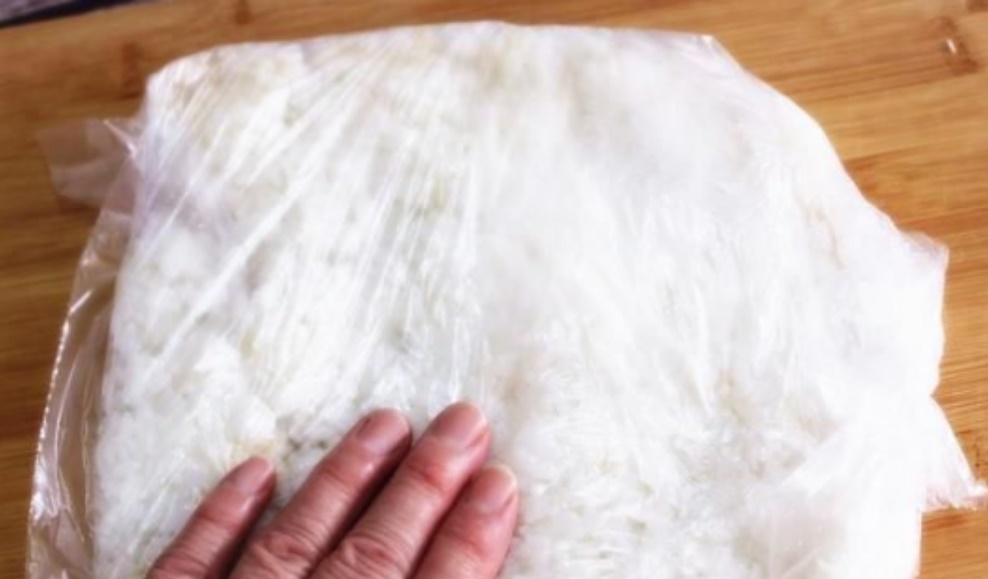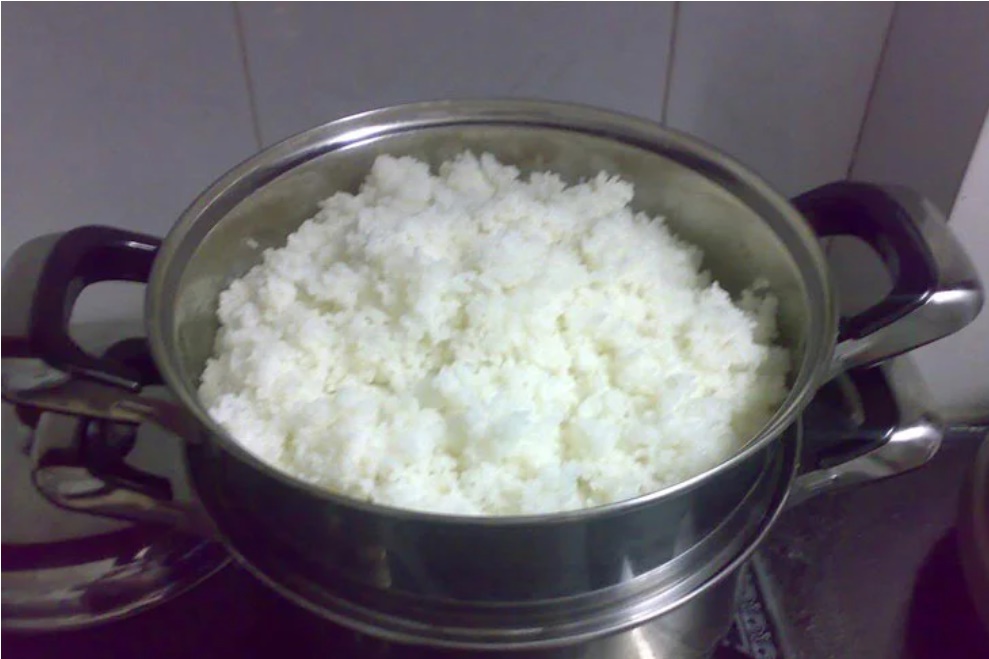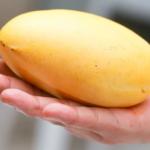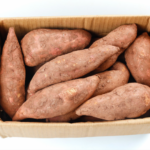One of the most common methods to preserve leftover rice is to store it in the refrigerator. After a meal, let the rice cool down and then place it in the fridge. The low temperature will slow down bacterial growth, keeping the rice edible for longer. When you want to eat it, simply reheat the rice in a steamer or microwave.
However, this method doesn’t prevent the rice from drying out and becoming hard. It also affects the taste when reheated.
To retain the moisture in the rice grains, follow these steps.
First, let the rice cool completely. Prepare a plastic bag (the type used for food storage or a ziplock bag). Place the cooled rice in the bag and remove as much air as possible before sealing it tightly.

Place the bag of rice in the freezer to keep it frozen. When you want to eat it, simply take it out and let it thaw naturally.
If you don’t have a bag, you can wrap the rice in plastic wrap and place it in an airtight container before putting it in the freezer.
Freezing the rice helps to retain more moisture in the grains. Additionally, the lower temperature in the freezer compared to the fridge further slows down bacterial growth, keeping the rice edible for an extended period.
There are also other methods to keep rice edible for longer. One traditional method is to add a small amount of salt to the rice while cooking. Salt not only enhances the flavor but also inhibits bacterial growth.
Alternatively, you can use vinegar at a ratio of 2ml per 1.5kg of rice as a substitute for salt, which will have a similar effect.
To ensure that your cooked rice smells and tastes good, and to prolong its freshness, it is important to keep the rice cooker clean. Wash the rice cooker thoroughly before cooking to remove any bacteria and dirt. This will not only keep your rice from spoiling quickly but also ensure safe consumption.
How to Steam Leftover Rice to Make it Taste Like New
You can steam leftover rice together with freshly cooked rice. Once the freshly cooked rice is ready, make a small well in the center and add a little hot water. Then, place the leftover rice in the well and cover it with the freshly cooked rice. Turn on the ‘Cook’ function again to reheat the leftover rice.
If you’re only reheating leftover rice, you can place it in a bowl and put it in the rice cooker with some water. Press the ‘Cook’ button, and in a few minutes, you’ll have hot rice that tastes like new. Alternatively, you can use a steamer basket and steam the rice like you would steam sticky rice or buns.

If you’re using a microwave, place the leftover rice in a ceramic or glass bowl, cover it tightly, and then start heating. This will ensure the rice is heated through without drying out.
According to Khoevadep
Should You Choose Large or Small Carrots When Shopping?
Carrots have earned the nickname “little ginseng” due to their abundant nutrient content, especially carotene. This humble root vegetable is a staple in households across the globe. To ensure you’re getting the best carrots, packed with flavor and nutrients, here’s a quick guide on how to select the finest ones.
The Magic of Ripening: Transforming Green Mangoes into Golden Delights
The secret to ripening mangoes swiftly is hidden no more. Uncover the mysterious art of hastening the maturation of this delectable fruit, a technique so efficacious it borders on sorcery. Prepare to be enlightened as we unveil the clandestine method that will revolutionize your mango-ripening endeavors.





































